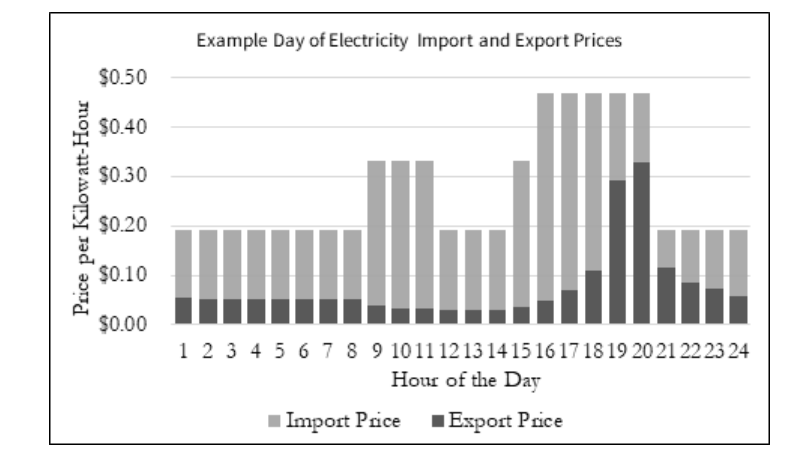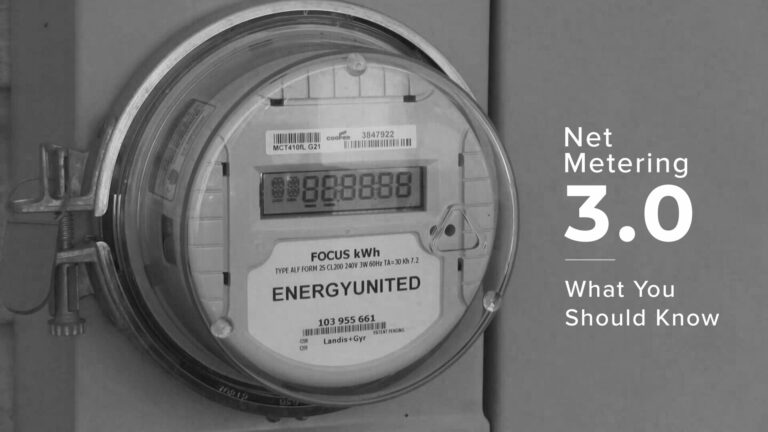NEM 3.0 was adopted by the California Public Utilities Commission (CPUC) without a single dissenting vote. Under the NEM 3.0 programme, customers of SCE, PG&E, and SDG&E with solar power systems will be rewarded an average of 8 cents per kilowatt-hour for any excess electricity they transmit back into the grid. Under NEM 2.0, the average export charge was 30 cents per kWh, therefore this represents a reduction of about 75%. To be grandfathered into NEM 2.0, IOU customers must submit a full interconnection application for a new solar system by April 13, 2023. This will enable clients to receive more benefits.
Even if the federal tax credit for solar energy has been extended to 30 percent until 2032, Californians still have many reasons to switch to solar energy as soon as possible.
On December 15, 2022, the California Public Utilities Commission (CPUC) approved NEM 3.0, a new net metering programme. This new approach will ultimately reduce the savings that new solar property owners enjoy on their monthly utility bills.
NEM 3.0 main takeaways :
Current solar property owners will continue to be subject to the current net metering regulations.
If NEM 3.0 is adopted, solar property owners will experience a 75% reduction in revenues for any excess electricity they transmit into the grid.
Under NEM 3.0, the payback period for solar energy systems with battery storage will be comparable to the payback period for solar energy systems that use only solar energy.
Residents of California have the possibility to be grandfathered into NEM 2.0 if they submit an Interconnection Application for their solar system by April 13, 2023.
When initiating a solar installation project under NEM 2.0, it is recommended to solicit quotations from numerous respected local installers.
We shall discuss the following themes in this Article
- How Net Metering works
- The suggested modifications to NEM 3.0
- From the perspective of the utilities
- A summary of the installation schedule for NEM 3.0
- There have been numerous inquiries regarding NEM 3.0.
Let’s begin with a brief overview of how the net energy metering system functions.
What does the abbreviation "NEM" stand For?
Net energy metering is the billing structure that exists between utilities and houses with solar panels. When the sun is shining, homeowners with solar panels can feed any excess energy back into the grid and receive credit. This practise is known as “net metering.” When the sun is not shining, they use electricity from the grid, therefore they apply this credit to the cost of that electricity.
Historically, laws controlling net metering have had a 1:1 offset ratio. This shows that the price of one kWh of electricity added to the grid was equal to the price of one kWh of electricity taken from the system.
In this scenario, homeowners with solar power systems capable of generating the same amount of electricity as their households’ needs would have their utility electricity bill replaced by a monthly payment on the cost of their solar equipment. This leads in savings on energy costs in the tens or even hundreds of thousands of dollars over the normal 25-year guaranteed lifespan of a solar system.
What precisely is NEM 3.0?
The California Public Utilities Commission (CPUC) approved NEM 3.0, an updated version of the net energy metering law, on December 15, 2022. It applies to utility customers residing within the service areas of the three main investor-possessed utilities in California, which are as follows:
California’s three biggest utilities are Southern California Edison (SCE), SDG&E (San Diego Gas & Electric), and Pacific Gas & Electric (PG&E) (SDG&E)
It is essential to remember that NEM 3.0 happens not to be retroactive, meaning that solar systems installed below NEM 1 or 2 will continue to operate under the policy in effect at the time of their installation.
Between NEM 2.0 and NEM 3.0, the value of export rates, commonly known as the value of excess electricity produced by solar systems, has seen the most significant change. Under NEM 3.0, the “Avoided Cost Calculator” will be utilised to compute home solar export pricing in lieu of retail rates (what customers pay for electricity). In a moment, we will explain the procedure for how this works.
The most significant aspect to remember is that the typical export rates for NEM 3.0 are around 75% lower than those for NEM 2.0.
Lower export rates relative to NEM 3.0 result in longer payback periods and diminished cost benefits for solar owners. According to the actual bids filed on the solar.com marketplace, here is how it breaks down.
There are five aspects regarding NEM 3.0 that you should know.
Consequently, the net metering value of solar electricity will decrease significantly.
No new taxes or levies, commonly referred to as “solar taxes,” are being imposed.
Under NEM 3.0, the combination of solar energy and battery-based energy storage will be more advantageous.
Solar users who submit an interconnection application before April 13, 2023 are eligible for grandfathering into NEM 2.0 for a term of twenty years.
Solar property owners who are grandfathered onto NEM 2.0 will have the opportunity to instal battery storage in the future while remaining on the NEM 2.0 grid.
The changing price system, which will diminish the value of solar energy, is the first and most crucial factor to consider.
Reduced exports of solar energy
The most major change between NEM 2.0 and NEM 3.0 has occurred in the rates at which solar property owners are compensated for the excess electricity their systems deliver to the grid (known as export rates).
Under the vast majority of net metering schemes, including NEM 2.0, solar property owners receive full retail credit for each kilowatt-hour (kWh) of electricity they supply to the grid.
If the NEM 3.0 suggestion is implemented, the worth of solar exports would no longer be determined using retail rates. The “Evaded Cost Calculator” will be used to calculate export costs, and these rates will fluctuate hourly and monthly.
Due to the complexity of this system, I’ve prepared a chart to demonstrate how individuals will be reimbursed for the excess solar energy they produce. The black lines reflect the rate at which solar property owners will be rewarded for excess solar production under NEM 3.0, while the grey bars show the amount paid per kWh for power from the grid.
There is no doubt that they are different, and the price of exports is considerably less than that of imports.
According to the California Solar and Storage Association (CALSSA), The clean energy and solar industry supporters still are reviewing the CPUC’s proposed decision, but relied on an original analysis, it would cut the average export rate in California from $0.30 per kilowatt to $0.08 per kilowatt and make those cuts real in April 2023, resulting in a 75% discount in export value.

The proposed decision of the CPUC
No new levies will be imposed on solar energy.
Despite the fact that the new rate structure will have a large negative impact on solar savings and increase the payback period for installing solar panels, the updated version of NEM 3.0 that was adopted by the California Public Utilities Commission (CPUC) offers a ray of light. The final version of NEM 3.0 does not include a collection of fees and levies for solar property owners, also known as “solar taxes.”
At one point, it was estimated that solar property owners’ monthly energy expenses would increase by nearly $60 due to these fees. They are currently unavailable alternatives.
Efforts to combine solar and battery Power
The NEM 3.0 document emphasises the significance of mixing solar energy with battery storage extensively. Due to the fact that the peak of solar output does not coincide with the peak of energy use, the issue in California is not with the generation of solar electricity; rather, it is with storing and utilising that electricity.
If we examine our helpful graph of import and export prices, we can see that export prices climb significantly between 7-8 pm. This is owing to the fact that the peak demand for electricity coincides with the nighttime decrease in solar generation, presenting a difficulty for the entire state.
During September’s peak demand hours, the new export rates have the potential to reach as high as $3.32 per kWh. Homeowners who are subject to NEM 3.0 and have access to battery storage can generate solar power during the day, store it in their batteries, and then feed it back into the grid at night, when export prices are at their highest.
Initial research into the NEM 3.0 plan indicate that the ROI for solar systems that include battery storage will be substantially similar to the ROI for solar systems that operate independently. Taking this into account makes the concept of combining solar energy with batteries more tempting, as you receive the same return on investment in addition to the advantages of having a battery backup in the event of a power outage.
Beginning on July 1, 2023, the Self Generation Incentive Program (SGIP) will have access to an additional $900 million in funding. This is in addition to the 30 percent federal tax credit. Under the SGIP, customers of SCE, PG&E, SDG&E, and SoCalGas are eligible for battery storage incentives.
There will be a grandfathering period of twenty years for NEM 2.0.
The 20-year grandfathering period for NEM 2.0 was maintained as part of the decision to instal NEM 3.0, which was also a significant feature of the decision. It was once proposed that the grandfathering term for NEM 2.0 will be shortened to ten years. Therefore, solar property owners will benefit from knowing that the grandfathering period will remain at 20 years.
Therefore, solar users who submit a complete interconnection application prior to the effective date of NEM 3.0 (April 13, 2023) will continue to operate under the substantially more favourable NEM 2.0. Here you will find information on how to upgrade your system to version 2.0.
What are the key components of a complete connectivity application? According to CALSSA, the following components comprise a complete connectivity application:
- Single Line Diagram of an Executed Contract (SLD)
- Information supplied by the Contractors State License Board (CSLB)
- A tutorial on consumer protection
- Oversizing confirmation (if applicable)
It is essential to remember that grandfathering into NEM 2 does not require a permit, a finished installation, or a completed inspection. However, if all of the essential paperwork is completed on time and is accurate, there is a three-year deadline to complete the solar system’s actual construction.
If you make changes to the system after the implementation of NEM 3.0 that result in an increase in system size, you risk losing your NEM 2.0 status.
In summary, there happens to be still time to launch a solar project and succumb an interconnection application earlier NEM 3.0 goes into effect.
NEM 2.0 customers can add battery storage at a later date.
Another important implication of the NEM 3.0 decision is that NEM 2.0 can eventually integrate battery storage without losing their NEM 2.0 designation.
This comes into play in one of the following two typical situations:
If you own a solar system in California and instal a battery storage system on or after April 13, 2023, you are ineligible for the NEM 3.0 transition.
If you are founded into NEM 2.0 because you submitted an interconnection application for a solar system without a battery before April 13, 2023, adding a battery storage system afterwards will not affect your NEM 2.0 status. Because grandfathering is a one-time event, this is the case.
Residents of California can consider it a huge triumph that they now have the chance to combine solar panels and batteries while continuing to participate in NEM 2.0, as doing so provides a variety of financial and environmental benefits.
From the Utilities’ Point of View It is the obligation of the utilities to provide reliable, safe, and affordable power to all users of the electric system. They have been concerned about the likelihood of cost transfers from solar customers to non-solar customers, particularly those low-income customers who are less able to utilise distributed energy resources such as onsite solar and energy storage due to their limited financial means.
In addition, the utility companies use their strategy as an incentive for customers to pair their residential solar systems with storage devices.
As stated in the organization’s initial proposal, NEM 3.0 Provides a storage incentive by non-tiered price-based TOU rates and makes sure consumers pay for prices required to serve them by a customer charge.
This suggests that consumers who add a battery storage system will be able to avoid some of the higher prices associated with pulling electricity from the grid in the evening, a time of day when time of use rates are higher than at other times.
Residents of California have until April 13, 2023 to submit the necessary papers for their interconnections to be grandfathered into NEM 2.0, according to this timeline.
When initiating a solar installation project under NEM 2.0, it is recommended to solicit quotations from numerous respected local installers.
Did NEM 3.0 Pass ?
Yes, the CPUC voted unanimously in favour of authorising NEM 3.0 on December 15, 2022.
The decision was made following a session of public consultation that lasted more than three hours and featured a substantial amount of public discontent with NEM 3.0.
Questions Frequently Asked About NEM 3.0
Is NEM 3.0 compatible with prior versions?
No, NEM 3.0 will not be compatible with older versions. The new net metering rules that come into effect on April 13, 2023 are only applicable to homeowners who have submitted their solar connection applications after that date. If a homeowner files a completed application for interconnection prior to the implementation of NEM 3.0, the homeowner will be grandfathered into NEM 2.0 for a period of twenty years.
Has the green light been given for NEM 3.0?
On December 15, 2022, the California Public Utilities Commission (CPUC) approved NEM 3.0 with a unanimous vote. The new policy will go into effect on April 13, 2023, following a 120-day transition period during which NEM 2.0 will be implemented. During this time, utility customers who complete a full interconnection application may continue to be grandfathered into NEM 2.0.
What requirements does NEM 3.0 have for solar energy ?
NEM 3.0 reduces the export rate for inhabited solar electricity from 30 cents per kWh to 8 cents per kWh, a decrease of approximately 75% from the previous average of 30 cents per kWh. A decrease in export prices will extend the payback period for solar owners operating under NEM 3.0 and decrease the total amount saved.
Consequently, the value of combining solar energy with battery storage is significantly enhanced. Under the new pricing structure, the return on investment for a combination of solar panels and batteries is comparable to that of solar panels alone, with the added autonomy and benefits of a backup power source.



